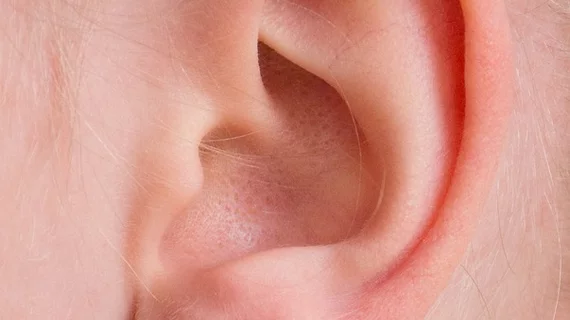State-of-the-art digital PET/CT imaging can assess brain stem function in patients with hearing problems and may also shed light on various neurodegenerative diseases.
That’s according to a new study of a small group of patients with asymmetric hearing loss, published in the March issue of the Journal of Nuclear Medicine. Expert radiologists analyzed a number of scans to determine whether glucose metabolized in regions of the brain central to human hearing and language switching.
They found less metabolization occurred in two critical areas of the brain opposite a patient’s poorer-hearing ear, compared to on the same side.
“With the possible exception of few dedicated high-resolution research scanners, earlier PET/CT systems with lower resolution did not permit clear-cut identification and assessment of brain stem nuclei,” said Iva Speck, MD, resident of otorhinolaryngology at the University of Freiburg Medical Center in Germany. “Today, the use of fully digital clinical PET/CT systems permits greatly enhanced imaging and quantitative assessment of small brain stem nuclei, such as the inferior colliculus (IC), the part of the midbrain that acts as a main auditory pathway for the body.”
For their study, 13 patients with asymmetric hearing impairment underwent digital, high-resolution 18F-FDG PET/CT imaging. Two experts reviewed their scans, focusing specifically on the inferior colliculus and primary auditory cortex—each critical to human hearing.
The team found that, in addition to greatly reduced regional glucose metabolism in the IC and PAC on the opposite side of the weaker ear, a longer time period with impaired hearing was related to an uptick in metabolism on the contralateral (opposite) PAC.
Speck commented that these results are likely to help providers predict whether cochlear implants can offer therapeutic benefits for those with certain types of hearing impairment.
“Previous studies suggest that the association between longer duration of hearing impairment and higher glucose metabolism indicates cortical reorganization. In bilateral deaf patients this has been shown to lessen the benefits of cochlear implants,” said Speck. “Prediction of a successful cochlear implant outcome might benefit from improved imaging with fully digital PET/CT systems, as large parts of the auditory system, including small brain nuclei such as the IC, can be assessed for preoperative patient characterization.”
Aside from hearing conditions, Speck noted that neurological researchers may also be interested in these findings, given that such diseases often impact brain stem nuclei.

